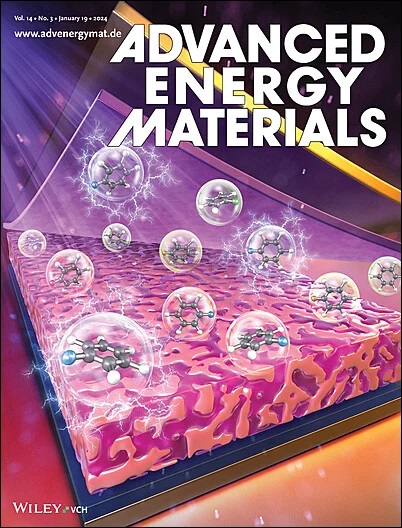开发 Cu2ZnSn(S,Se)4 薄膜以实现高效太阳能电池的有效前驱体溶解策略
IF 24.4
1区 材料科学
Q1 CHEMISTRY, PHYSICAL
引用次数: 0
摘要
要提高 Cu2ZnSn (S, Se)4 (CZTSSe) 薄膜太阳能电池的效率,就必须开发出结晶良好的光吸收层。深入了解前驱体溶液化学在薄膜成核和晶体生长过程中的作用至关重要。对这些过程的深入了解有助于开发创新战略,以提高吸收层质量,最大限度地减少有害的块状缺陷,并最终提高设备性能。本研究阐明了在不同浓度的前驱体溶液中,硫脲与金属阳离子之间的缩合反应,以及 2-甲氧基乙醇(MOE)的醇解反应。本研究的主要重点是实施一种简单、环保的创新旋涂策略,旨在优化 Cu2ZnSnS4 (CZTS) 前驱体薄膜,并调整薄膜体中的硒含量,以促进硒化过程中的晶粒生长。这一策略在抑制深层缺陷形成的同时,有效地改善了吸收层的形态,从而增强了吸收层界面和体层区域的载流子传输。因此,合成的 CZTSSe 吸收体具有更高的结晶度和更低的缺陷,从而使太阳能电池的效率达到了惊人的 14.10%。这些发现强调了利用环境友好型溶剂操纵前驱体溶液化学反应来制造高效 kesterite CZTSSe 太阳能电池的潜力。本文章由计算机程序翻译,如有差异,请以英文原文为准。

An Effective Precursor-Solutioned Strategy for Developing Cu2ZnSn(S, Se)4 Thin Film Toward High Efficiency Solar Cell
Enhancing the efficiency of Cu2ZnSn (S, Se)4 (CZTSSe) thin-film solar cells requires the development of well-crystallized light-absorbing layers. A deep understanding of the role of precursor solution chemistry in film nucleation and crystal growth processes is essential. Insights into these processes enable the development of innovative strategies to enhance absorber quality, minimize detrimental bulk defects, and ultimately improve device performance. This study elucidates the condensation reactions between thiourea and metal cations, as well as the alcoholysis of 2-methoxyethanol (MOE), at different concentrations of precursor solutions. The primary focus of this study is implementing a simple and environmentally friendly innovative spin-coating strategy, aimed at optimizing Cu2ZnSnS4 (CZTS) precursor films and adjusting the Se content within the film bulk to promote grain growth during selenization. This strategy effectively improves absorber morphology while suppressing the formation of deep-level defects, thereby enhancing carrier transport in both interfacial and bulk regions of the absorber layer. Consequently, CZTSSe absorbers with enhanced crystallinity and reduced defects are synthesized, resulting in a solar cell with an impressive efficiency of 14.10%. These findings underscore the potential for creating highly efficient kesterite CZTSSe solar cells through the manipulation of precursor solution chemistry using environmentally friendly solvents.
求助全文
通过发布文献求助,成功后即可免费获取论文全文。
去求助
来源期刊

Advanced Energy Materials
CHEMISTRY, PHYSICAL-ENERGY & FUELS
CiteScore
41.90
自引率
4.00%
发文量
889
审稿时长
1.4 months
期刊介绍:
Established in 2011, Advanced Energy Materials is an international, interdisciplinary, English-language journal that focuses on materials used in energy harvesting, conversion, and storage. It is regarded as a top-quality journal alongside Advanced Materials, Advanced Functional Materials, and Small.
With a 2022 Impact Factor of 27.8, Advanced Energy Materials is considered a prime source for the best energy-related research. The journal covers a wide range of topics in energy-related research, including organic and inorganic photovoltaics, batteries and supercapacitors, fuel cells, hydrogen generation and storage, thermoelectrics, water splitting and photocatalysis, solar fuels and thermosolar power, magnetocalorics, and piezoelectronics.
The readership of Advanced Energy Materials includes materials scientists, chemists, physicists, and engineers in both academia and industry. The journal is indexed in various databases and collections, such as Advanced Technologies & Aerospace Database, FIZ Karlsruhe, INSPEC (IET), Science Citation Index Expanded, Technology Collection, and Web of Science, among others.
 求助内容:
求助内容: 应助结果提醒方式:
应助结果提醒方式:


